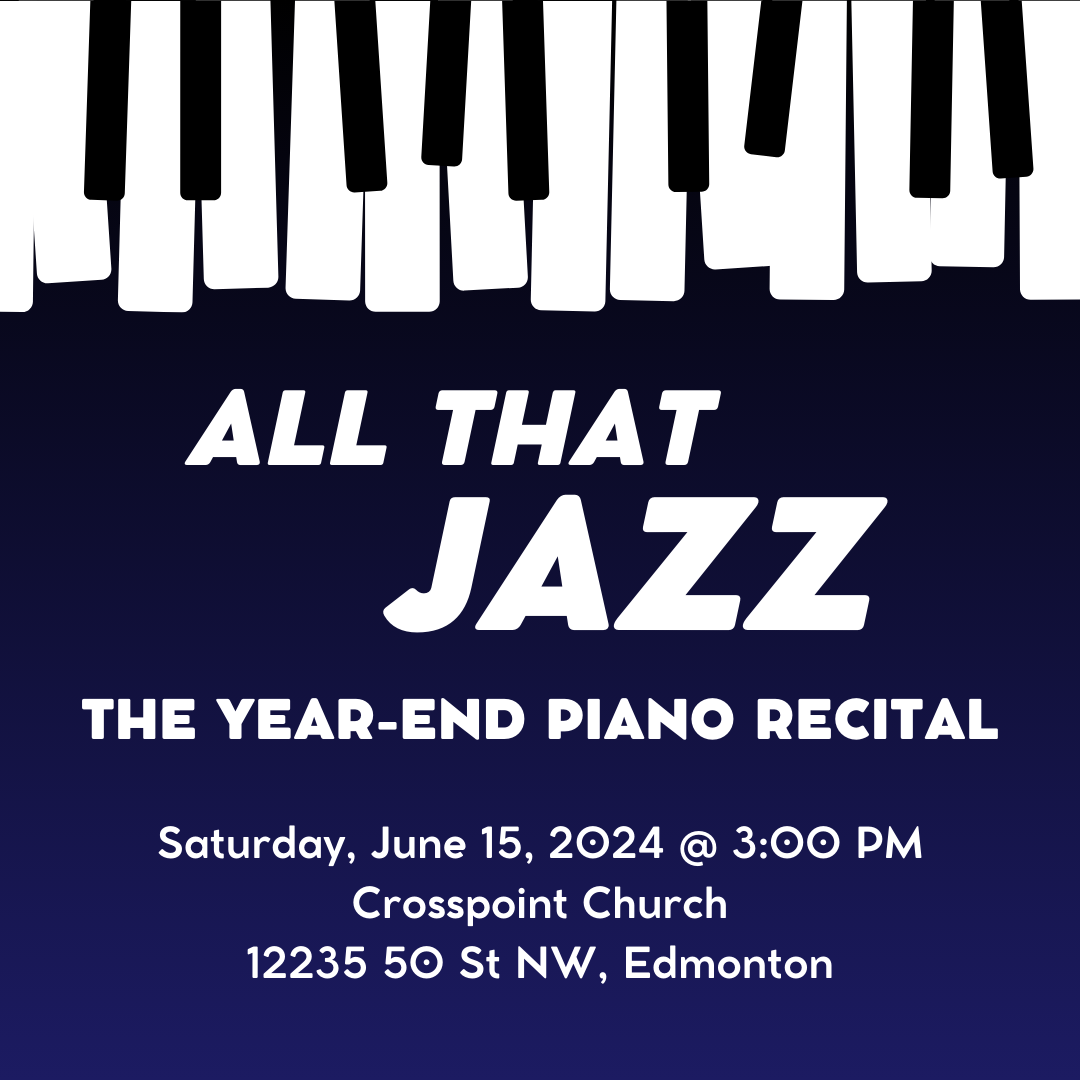Listening Quest January 2017: Glenn Gould
Sunday, January 1, 2017 by Vicki Martin | Listening Quest
I think it is time to listen to some music for piano! I’d like to introduce you to Glenn Gould, if you haven’t already heard of him. He is considered one of Canada’s best pianists of all time.
.

Glenn Gould was born in Toronto in 1932, studied at the Royal Conservatory, and completed his associate diploma by the age of 13. At the age of 20, he recorded his first album, which was enough to get the attention of Columbia Records, who signed a recording contract with him. His first recording with them was in 1955, and he chose the Goldberg Variations by J.S. Bach. It wasn’t a very well-known or popular piece at the time, so it was considered a risky choice, but it turned out to be Columbia’s best selling classical album! In 1981, 26 years later, he had changed his mind about how he thought it should be played and recorded it again. The second version is slower and includes more of the repeats, making the entire recording 51 minute and 18 seconds, quite a bit longer than the 38 minutes 34 seconds of the 1955 version. It was only a year later, just a few days after his 50th birthday, that he died quite suddenly of a stroke. You could say that Gould’s career both began and ended with the Goldberg Variations.
Gould was considered a genius, particularly with his interpretations of Bach. He played more detached than most other performers but had the remarkable ability to bring out each individual voice in the counterpoint (intermingling melodies). His style is distinct and unique, so once you know how Gould usually sounds, he is hard to mistake for other performers. You’ll often hear him singing or humming along as well! He was very eccentric and some would even say a little crazy. He sat at the piano extremely low in a chair his father made him, which he used until it was literally falling apart. You’ll see it in the video below. He always wanted to be warm, so he would wear a long coat, hat, and mitts or gloves, even in warm weather, and insisted on his recording studios being very warm. Gould hated audiences, so he only gave about 200 concerts in his lifetime (which many concert pianists would do in two years) and was notorious for cancelling at the last minute. When he was 31, he gave up giving concerts altogether in favour of playing in the recording studio where he could be more in control. Because of this dedication to recording, he recorded 65 albums in his short lifetime.
The Goldberg Variations was the only set of variations written by J.S. Bach. There is an aria (song) to begin with, followed by 30 variations, and then the aria once again to finish. When you listen to it, it’s easy to think that they don’t sound very much like the first aria because they aren’t variations of the melody, but rather the bass line. In addition, every third variation (3, 6, 9, and so on) is a canon (like Row, Row, Row Your Boat sung in a round) where the bass line enters a little later, but to make it even more complex, it enters on the same note in variation 3, a second above in variation 6, a third above in variation 9, and all the way up through the intervals. The 30
th
and last variation breaks the pattern for a “musical mashup” using the theme mixed together with a bunch of German folk songs. It was meant as a clever joke, but it’s unfortunately a little lost on those of us who don’t know the popular songs of 1741.
Here we have it – the 1981 recording and video of Glenn Gould playing the aria and first 7 variations of the Goldberg Variations!
Extra Exploring: Well, of course, you’re going to listen to the rest of the variations!
Listening Quest December 2016: Hallelujah Chorus
Thursday, December 1, 2016 by Vicki Martin | Listening Quest

It’s almost Christmas! There’s no better time to listen to the Hallelujah Chorus by George Frideric Handel (1684-1759). I hope you’ve heard it before, but if you haven’t, it’s about time! Here’s a few interesting facts for you to know:
- The Hallelujah chorus is from an oratorio (like musical theatre or opera but without costumes, sets, or acting – just telling the story through music with an orchestra, choir, and soloists sometimes taking on characters in the story) called the Messiah. It tells the story about the birth, life, death, and resurrection of Jesus, so it is often performed around Christmas. While the Hallelujah chorus is often thought of as a Christmas song, it actually shows up in the oratorio after Jesus has risen from the dead and gone back to heaven. Technically, it’s more of an Easter song!
- The tradition is for the audience to stand during this song. Many say that this is because King George II stood up because he was so moved by the music, and if he stood, everyone else had to stand as well. However, there is no evidence that King George II was ever at a performance, so we don’t really know why except that it was already tradition even before Handel passed away.
- Handel was born in Germany, but moved to London, England, where he was a very successful and wealthy composer. He never married or had children, but was a generous guy, donating music and the proceeds from some of his performances (including the Messiah) to the Foundling Hospital, a home for orphaned and abandoned children.
- The house where Handel lived in London has been turned into the Handel House Museum. Ask me about it – I’ve been there! He is buried and has a statue at Westminster Abbey (where Prince William & Kate Middleton were married) in what is known as Poet’s Corner. Other famous writers and poets are buried or have a memorial there, including Shakespeare.
- You can go hear the Messiah performed by the Edmonton Symphony Orchestra on December 9-11, or catch it next year, since they do it every December!
The biggest one I could find - the 300 members of the Mormon Tabernacle Choir, plus another 2,000 in a virtual choir!
Listening Quest November 2016: Graphical Scores of R. Murray Schafer
Tuesday, November 1, 2016 by Vicki Martin | Listening Quest
November 20 – 26 is Canada Music Week, so to celebrate, I’d like to introduce you to some contemporary Canadian music! By that, I also mean contemporary art music, not contemporary pop music, so like much contemporary art, it is admittedly slightly strange sometimes and completely and utterly strange at other times. While there may be moments of beauty, it’s about expressing and exploring all kinds of sounds and emotions, so you might love it or hate it or find that you can’t stop thinking about it.
I’d like you to hear a piece by R. Murray Schafer, who is one of Canada’s best known living composers. He was born in 1933 and has lived most of his life in Ontario. He was very interested in “acoustic ecology” - the study of how humans are affected by natural and artificial sounds. He wanted to preserve the soundscape through anti-noise legislation. After a trip to Greenland and studying the snow from his farmhouse window, he was inspired by seeing the shapes of the snow to write the piece we are about to hear, Snowforms. Schafer uses what is called graphical notation, which doesn’t look very much like the music that we are used to seeing on the staff and more like pictures of what he wants to happen with the sound. For this piece, he started with a series of sketches of the snow and then created the music out of that. It is written just for female voices and incorporates several Inuit words for snow as text within a lot of humming, meant to convey the stillness and peacefulness of snow.
Take a listen, and remember as you follow along that the double slashes // on the left side indicate another line of music:
Extra Exploring: If you liked that, you will probably also like his piece called Miniwanka, or The Moments of Water, which explores water as rain, streams, lakes, rivers, and the ocean through sound, again using North American Indian languages with an even more interesting graphical score to follow!



